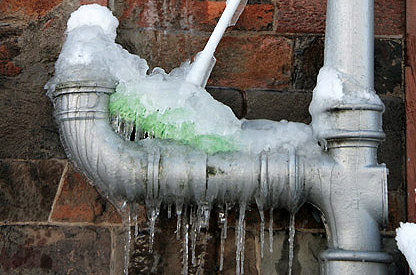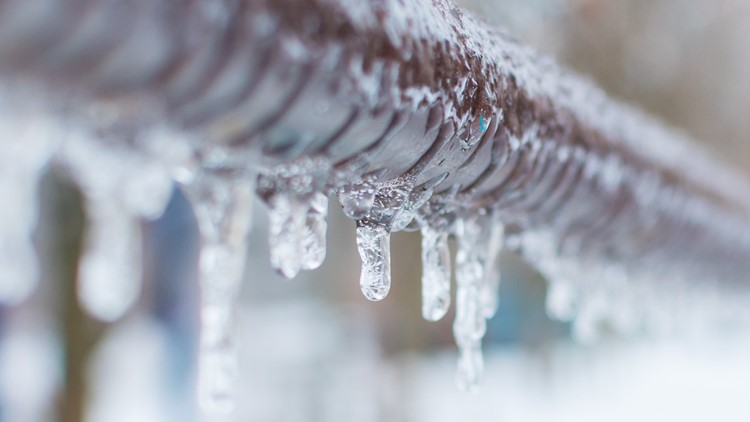This post down below on the subject of Winter Plumbing Precautions: Preventing Frozen Pipes is extremely captivating. Give it a go and make your own personal assumptions.

Winter can damage your pipes, particularly by freezing pipelines. Here's just how to prevent it from happening and what to do if it does.
Introduction
As temperatures decline, the threat of frozen pipelines rises, possibly leading to costly repair services and water damage. Understanding exactly how to stop frozen pipelines is critical for home owners in cool environments.
Prevention Tips
Shielding prone pipelines
Wrap pipes in insulation sleeves or utilize warmth tape to safeguard them from freezing temperature levels. Concentrate on pipes in unheated or outside areas of the home.
Home heating strategies
Keep interior areas sufficiently heated, specifically locations with pipes. Open up cabinet doors to enable cozy air to circulate around pipes under sinks.
Just how to recognize frozen pipes
Look for decreased water circulation from taps, unusual smells or sounds from pipelines, and noticeable frost on exposed pipes.
Long-Term Solutions
Architectural adjustments
Take into consideration rerouting pipelines away from outside wall surfaces or unheated areas. Include extra insulation to attics, basements, and crawl spaces.
Updating insulation
Buy high-grade insulation for pipes, attic rooms, and walls. Correct insulation aids maintain regular temperatures and lowers the threat of frozen pipelines.
Securing Outdoor Pipes
Yard tubes and outdoor faucets
Separate and drain pipes garden pipes before winter season. Mount frost-proof faucets or cover outside taps with protected caps.
Comprehending Frozen Pipes
What causes pipelines to ice up?
Pipelines freeze when revealed to temperatures listed below 32 ° F (0 ° C) for extended durations. As water inside the pipelines freezes, it increases, taxing the pipe walls and possibly triggering them to burst.
Risks and problems
Frozen pipelines can bring about water interruptions, residential property damage, and pricey fixings. Ruptured pipes can flood homes and trigger considerable structural damage.
Signs of Frozen Pipes
Recognizing frozen pipelines early can prevent them from breaking.
What to Do If Your Pipes Freeze
Immediate activities to take
If you suspect frozen pipelines, keep faucets open to relieve stress as the ice melts. Make use of a hairdryer or towels soaked in hot water to thaw pipes gradually.
Verdict
Preventing frozen pipes requires positive steps and fast feedbacks. By recognizing the causes, indicators, and safety nets, house owners can secure their pipes during winter.
5 Ways to Prevent Frozen Pipes
Drain Outdoor Faucets and Disconnect Hoses
First, close the shut-off valve that controls the flow of water in the pipe to your outdoor faucet. Then, head outside to disconnect and drain your hose and open the outdoor faucet to allow the water to completely drain out of the line. Turn off the faucet when done. Finally, head back to the shut-off valve and drain the remaining water inside the pipe into a bucket or container. Additionally, if you have a home irrigation system, you should consider hiring an expert to clear the system of water each year.
Insulate Pipes
One of the best and most cost-effective methods for preventing frozen water pipes is to wrap your pipes with insulation. This is especially important for areas in your home that aren’t exposed to heat, such as an attic. We suggest using foam sleeves, which can typically be found at your local hardware store.
Keep Heat Running at 65
Your pipes are located inside your walls, and the temperature there is much colder than the rest of the house. To prevent your pipes from freezing, The Insurance Information Institute suggests that you keep your home heated to at least 65 degrees, even when traveling. You may want to invest in smart devices that can keep an eye on the temperature in your home while you’re away.
Leave Water Dripping
Moving water — even a small trickle — can prevent ice from forming inside your pipes. When freezing temps are imminent, start a drip of water from all faucets that serve exposed pipes. Leaving a few faucets running will also help relieve pressure inside the pipes and help prevent a rupture if the water inside freezes.
Open Cupboard Doors
Warm your kitchen and bathroom pipes by opening cupboards and vanities. You should also leave your interior doors ajar to help warm air circulate evenly throughout your home.

I recently found that post about How to prepare your home plumbing for winter weather when doing a lookup on the internet. Please take the opportunity to share this post if you enjoyed it. Bless you for your time. Kindly stop by our blog back soon.
Course Detail
Comments on “Essential Tips to Avoid Frozen Plumbing in Cold Weather”